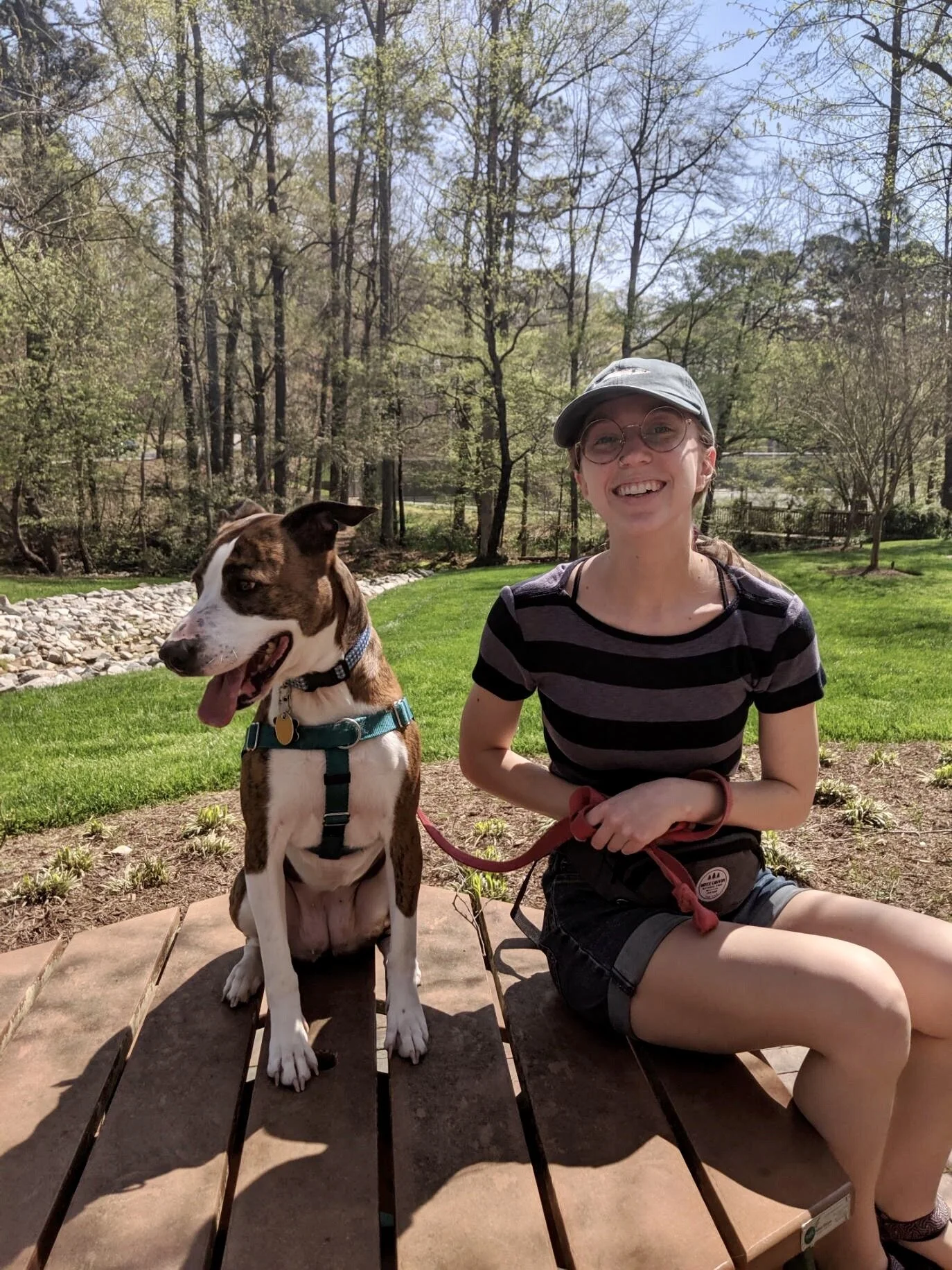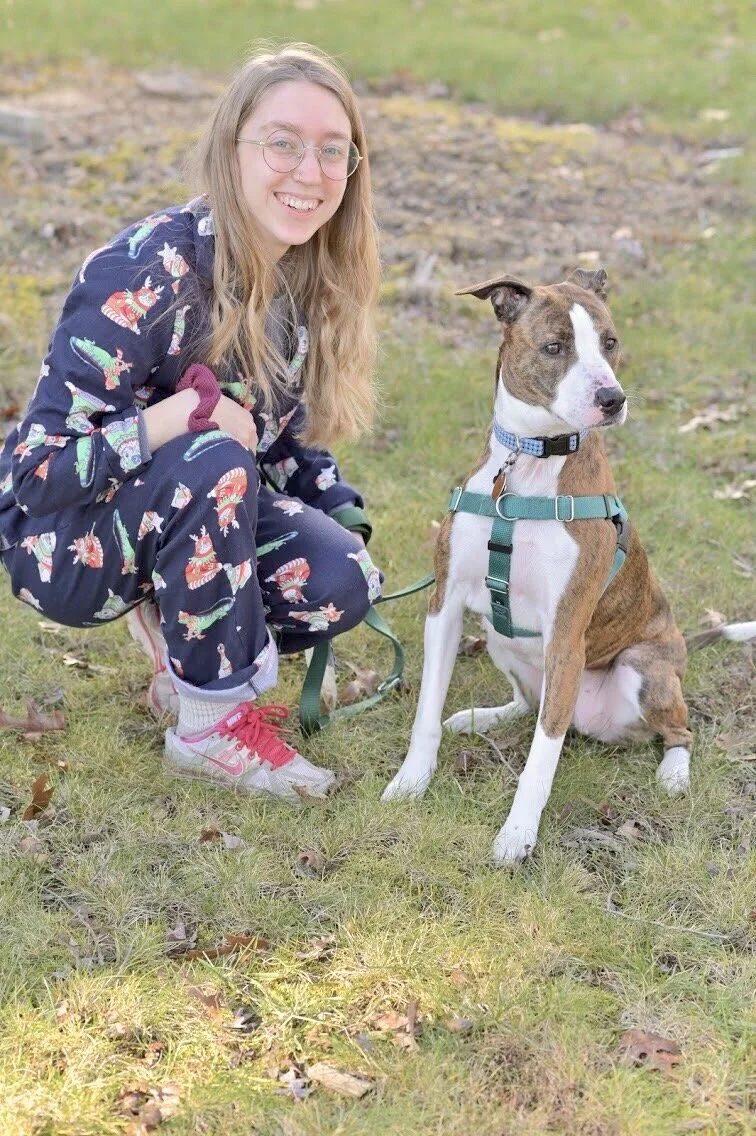Dogs and Coronavirus: Will My Dog Get Separation Anxiety After the Quarantine
In this video you’ll see a time-lapse of Logan Buie, an assistant dog trainer from Raleigh, N.C., working with her dog, JJ, in a real life separation anxiety training session.
Editor’s Note: Over the last couple of weeks we’ve received questions from members of our community wondering if their dogs can develop separation anxiety from spending too much time with them during self-quarantine. For answers, we sat down with Logan Buie, an assistant dog trainer from Raleigh, N.C, who is especially passionate about separation anxiety education. She is also a co-host of our recent Tails of Connection Training Party.
Can my dog get separation anxiety from spending too much time with me during the quarantine?
The answer is a definitive … maybe. Some dogs who have never shown symptoms of separation anxiety can develop it after a big life change like moving or a large shift in routine, like self-quarantining. But some dogs are able to seamlessly return to their old routine after a big change. I don’t know that there’s any way to predict which dogs will struggle with a life change, and it is likely related to a set of genetic factors, the same way that certain puppies are predisposed to separation anxiety very early in life.
Please do not panic about this, though! We can’t control everything about our dogs, and we certainly can’t control how long we are under social distancing precautions in our communities. We can just do the best we can, right now.
When my partner and I adopted JJ, (pictured above), in October of 2017, it soon became clear that she had some behavioral problems. She is reactive to almost all dogs and has separation anxiety.
What are the steps to reduce the possibility of that happening? Is there something I should do with my dog for a few minutes every day?
The good news about my answer to the first question is that we can practice departures with our dogs to maintain a sense of normalcy. You can practice short departures around the time of day that you would normally leave for work, driving around the block if you can, or just sitting on your front porch. You can also practice these short departures at different times of day, so that your non-separation anxiety dog is reminded that sometimes you just randomly “pop-out” and it’s absolutely no big deal. This could be a great time to work on a project in the garage, mow your lawn, or take a walk around your neighborhood without your dog.
Even if you don’t have a dog with separation anxiety, I would suggest monitoring your dog on camera for these departures. You can use a laptop webcam or an old phone; it doesn’t have to be fancy. The change in routine can be hard for our dogs, so even if your dog has never shown signs of anxiety during previous absences, it’s a good idea to check on them via camera to make sure that they are still comfortable with you leaving. If they show any signs of discomfort, like whining, barking, crying, scratching/digging at the door, pacing, etc., they need to be left for a shorter period of time the next time you leave. And don’t forget to use the camera to check on your dogs when you go back to work, too. If they do end up showing any signs of separation anxiety, you’ll want to know immediately, so that it can be treated!
What if my dog already had separation anxiety prior to the quarantine, and we’d been making strides to reduce his anxiety? How do I make sure he is not set back by this? What should we be working on every day?
I won’t lie, this was the first thing I thought about when my partner and I both moved to working remotely. I know I had bigger problems to worry about, but instead I was focused on this: “What if my dog, JJ, can’t handle us going to work after all this is over?” Since then, my worry has decreased a bit, for a few reasons. One is that I just can’t control how long we’re stuck at home or how JJ will respond to going back to her old routine. So I try not to dwell on that stuff.
Another reason my worry is a little lower now is that I am trying to get back into the swing of separation anxiety training! If you can, keep training exactly the way you were training before self-quarantining started. If you aren’t able to get in your car and go out (your city doesn’t allow it, you are avoiding the grocery store for safety reasons, etc.) you can practice leaving your dog while you hang out on the front porch with a cup of tea or a book.
And like I mentioned above, the change in routine has been hard on most of our dogs. So even if you are training at the same time of day as usual and following the same training plan, you might see a bit of a setback from where you were two weeks ago - that’s okay! Go at your dog’s pace. Focus less on the duration you’re getting, and try to focus more on the number of good, safe departures that you are giving your dog each time you practice. It can be easy to aim for departures that are longer than our dogs are comfortable with, so have some flexibility. It’s always important, but especially now.
This might also be an awesome opportunity to train your dog to be left alone at times that you normally can’t train. During normal life, I can only get in about one separation anxiety session a day (aiming for five days a week.) I’m hoping to use this time working at home to do one practice session in the morning and one practice session in the evening.
I just brought a puppy home. We are working from home right now, so my puppy only knows what it's like for us to be around all of the time. Is there anything I can do to help prepare my puppy for a more “normal” routine? Any advice for small things we can work on together?
YES! You can work on the exact same thing that I mentioned above - practice departures. You can do a pared down “getting ready for work routine,” and then leave your dog while you take a walk or sit on the front porch and get some fresh air, which we all need right now. Or maybe you need to go (safely!) pick up groceries from your local market - try to fit this in here, like you’re “going to work.” This won’t be the same as getting them ready for the entire workday, because we can’t be out of our homes all day long right now, but it is a great chance to prepare them for the fact that you’ll leave at a particular time each day.
Many people also don’t have enough time to gradually ease their puppies into being left for several hours at a time, due to the limitations of going to work. So the silver lining of this is that you probably have more time to train your puppy to be okay with your absence than you normally would!
JJ has taught me immense amounts of patience and compassion, and it is safe to say that without her, I would not have discovered my passion for animal behavior and dog training.
If you’re planning to crate train your puppy, you can work on that now, as well as training them to be okay with being in a separate room from you. Again, we all know that this isn’t the same as the training that happens when you actually go to work, but it’s important to add all this into the “trust bank” that you have with your puppy. And when you do go back to your normal routine, don’t expect them to be okay with you being gone for six hours immediately. You’ll want to slowly work up to the full amount of time, to set them up for success and avoid panic. When you do go back to work, be sure to check on your puppy periodically via camera, so that you can identify any possible signs of stress, if needed.
Is it possible to “cure” separation anxiety?
I love this question. No good dog trainer will ever promise you a cure that’s 100% guaranteed. But there’s also an outdated myth that a dog with separation anxiety will always panic, for the rest of his life, end of sentence. This just isn’t true! There’s a good prognosis for most dogs with separation anxiety if it’s treated properly: with a desensitization plan that makes the owner’s absences “No Big Deal” instead of “Super Scary All The Time.” This means always practicing departures that keep your dog under threshold (i.e. returning to the room before they panic). Many dogs with separation anxiety can eventually be left alone for a few hours, like a “normal” dog. It just takes dedication.
A Special Note From Logan
I want to add a little author’s note on taking care of ourselves. If you are feeling tired, overwhelmed, and anxious, and you can’t picture fitting training into your life right now, that’s okay. The maximum we can train for separation anxiety is generally two times a day, for five days a week (but that can vary by dog.) And oh boy - that feels like way too much for me, as a human, right now. Aim for something easy. Maybe just once a day, a couple times a week! Maybe it’s just once a week right now, or you just pop out for a few minutes to check the mail every couple of days. Maybe you work it into your morning routine, right before you start working from home. Or maybe you sleep in a little instead, because we’re all trying to cope. Please do not feel like you have to pressure yourself to be the perfect trainer or dog parent right now. We are all just trying to survive. Now is not the time for perfectionism. We should all be considering how we can set our dogs up for success when we get back to normal, but we also need to be taking care of ourselves. Take a few deep breaths, do what you can, and give your dog a big hug for me.
You can follow Logan’s work and her adventures with her dog, JJ, on Instagram and on her website here.


